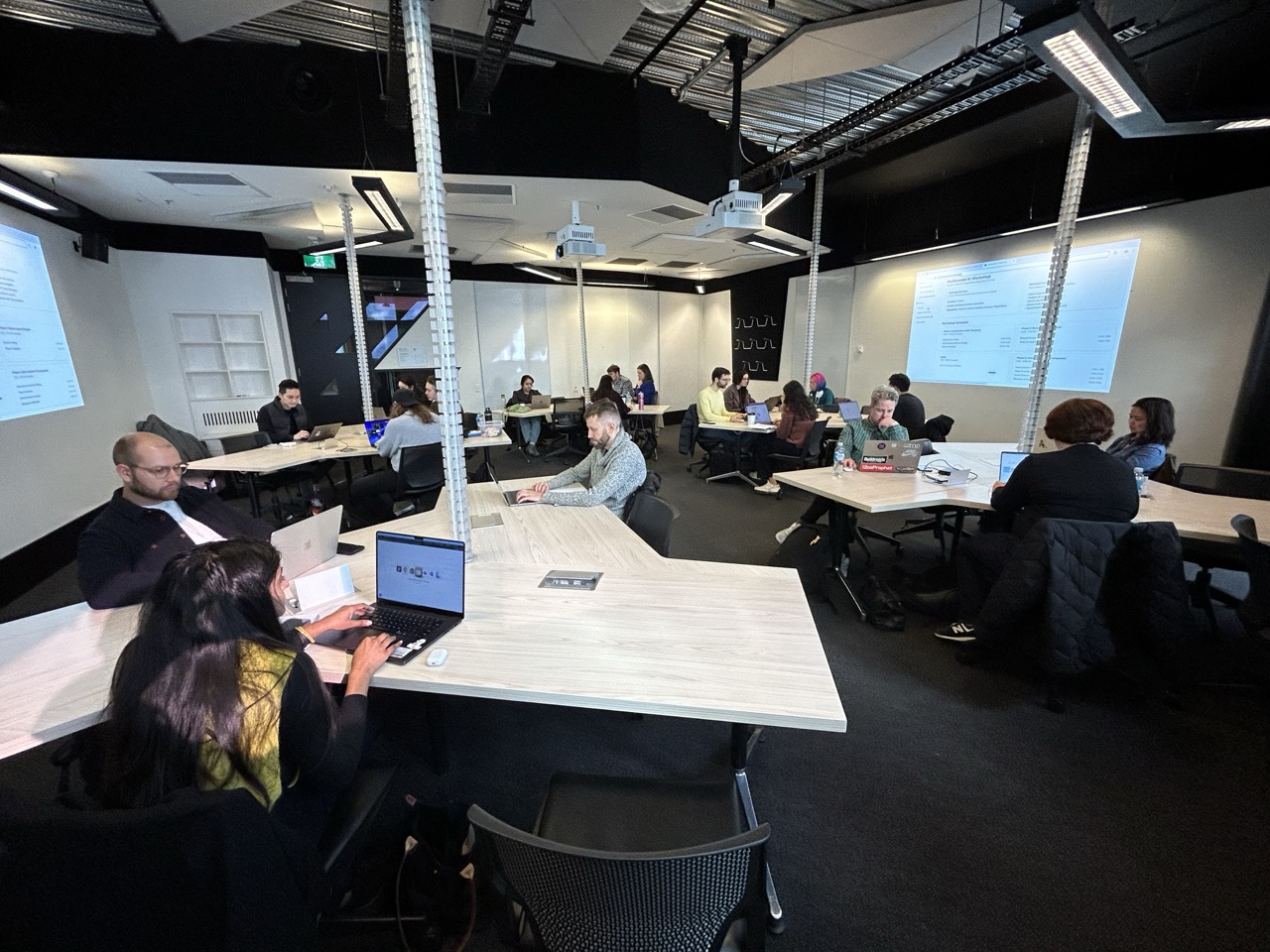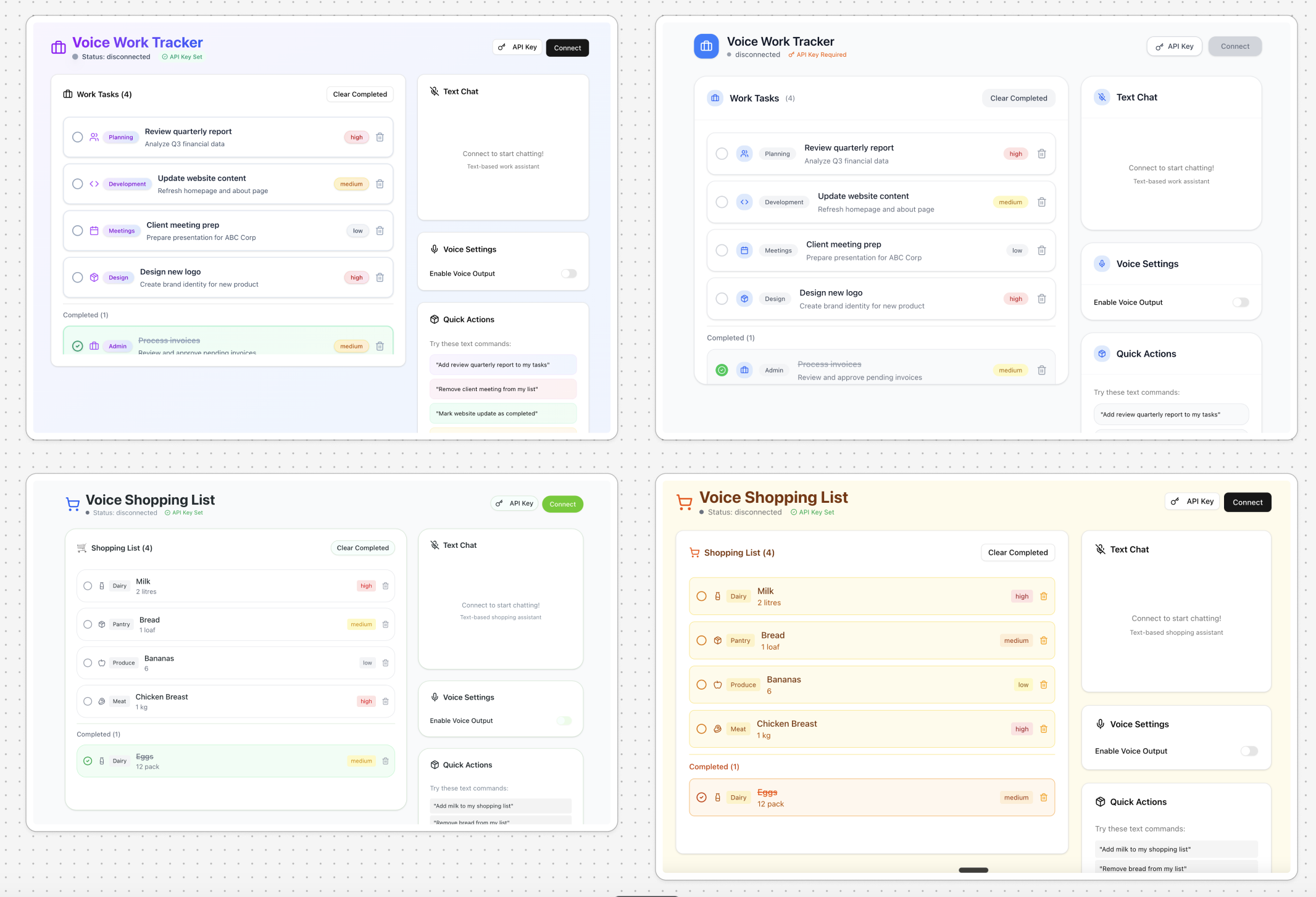
Cursor curious designers
This is Part 2 of a 2-part series
Part 1: ← The Three C's Framework: Consent, Context, and Capabilities
Part 2: Teaching designers to build with Cursor (this post)
In Part 1, we explored the conceptual framework behind building meaningful AI applications. Now, let's dive into how designers learned to actually build these experiences themselves.
Workshop Overview
I ran a hands-on Cursor workshop for designers at Design Outlook in Naarm Melbourne, Australia 2025. The goal was to switch designers onto building with the latest AI APIs so they can understand and reason about the design challenges of building products that express Consent, Context and Capabilities.
The Challenge
For most participants, this was their first experience using an IDE. Some had previously tried Cursor but bounced off to more designer-friendly tools like v0 or Loveable. The goal was to make coding accessible and demonstrate how designers can contribute to AI-powered development workflows.
Starting with Something Familiar: Markdown Recipes
The participants’ first file they edited in Cursor wasn’t a code file, but in fact a recipe. Learning code and learning Cursor are actually two separate skills, and by inviting participants into Cursor with something familiar and recognizable, we could focus on the tool itself.
At its core, IDEs are souped up text editors. By starting with markdown recipe files, participants could see this fundamental truth without being overwhelmed by syntax highlighting, error messages, or complex file structures.

Starting with recipes made AI-assisted editing tangible and relatable
The beauty of starting with markdown was that participants could verify the output - they knew if a recipe made sense or not. This built confidence in the AI assistant’s capabilities while introducing core concepts like:
- Command + K for inline edits
- The agent loop concept
- Breakpoints and model selection
From Recipes to Meal Plans: Understanding AI Agents
Once everyone had created a collection of recipes, we used Cursor’s agent feature to generate meal plans. Participants could ask questions about their recipes and see how the AI could reason across multiple files.
This phase was crucial for understanding:
- How AI agents can synthesize information from multiple sources
- The importance of context in AI responses
- The difference between simple edits and complex reasoning tasks
The Leap to Code: Shopping Lists Come Alive
Next came the magic moment - we transformed markdown shopping lists into interactive HTML pages with plain CSS and JavaScript. This was where designers saw their first “aha!” moment.

From markdown to interactive HTML - designers could see their lists come to life
What made this powerful was seeing the variation in output quality based on:
- Model selection (GPT-4 vs Claude vs others)
- Prompt specificity
- Context provided to the AI
This tangible demonstration helped newcomers understand model capabilities in a way that abstract explanations never could.
The Unexpected Success: Everyone Running Next.js
The most ambitious part of the workshop was getting designers to install Node.js/npm and run a Next.js application. I intentionally did not ask students to install the Node dependency before class, as I was concerned this could be a negative experience, causing some panic and concern.
Sure enough, in class as we opened up our Terminal pane in Cursor, we did have one student remark that they were out of their depth and feeling uneasy with the next steps. In fact, that participant had correctly followed the steps and just needed me to visually confirm that everything was working as expected.
The Process That Worked:
- Participants asked Cursor for help installing Node.js
- They brought their Terminal into context with the agent
- I modeled the behavior of providing terminal output back into the chat context
- Cursor provided personalized instructions based on their specific OS and system
- Within minutes, designers were running their first local development server
The key insight: Cursor could meet each participant where they were at, providing customized assistance based on their specific setup and experience level. By handling installation in real-time, we turned a potential blocker into a learning opportunity about how AI can provide personalized technical support.
Pushing the Frontier: OpenAI Realtime Integration
For the final segment, we worked with an OpenAI Realtime starter I had prepared. Participants:
- Dropped documentation directly into Cursor
- Modified the voice interface behavior
- Experimented with multimodal AI capabilities
- the design and look and feel of the list using Shadcn design system

The variation in Next.js app quality helped illustrate model capabilities
This highlighted a crucial point: only with tools like Cursor can non-programmers experiment with frontier AI capabilities. Traditional no-code tools can’t keep pace with the rapid evolution of AI APIs.
Participant Feedback and Impact
The positive feedback was overwhelming. Many designers expressed that for the first time, they could see how they fit into modern development workflows.
Several participants have since:
- Started using Cursor for prototyping
- Integrated AI tools into their design workflow
- Begun collaborating more closely with developers using shared tools
Lessons for Future Workshops
What Worked Well
- ✓ Starting with familiar content (recipes)
- ✓ Progressive complexity increase
- ✓ Hands-on experimentation time
- ✓ Real-time problem solving with AI
- ✓ Focus on understanding over memorization
Tips for Instructors
- → Have a simple starter project ready
- → Emphasize verification of AI output
- → Show model selection early
- → Encourage experimentation
- → Celebrate small wins loudly
The Future of Design-Development Collaboration
This workshop demonstrated that the barriers between design and development are becoming increasingly permeable. With AI-powered tools like Cursor, designers can:
- Prototype with Production Code: No more throwaway prototypes - designers can create real, functional applications
- Understand Technical Constraints: By working directly with code, designers gain deeper empathy for implementation challenges
- Contribute to AI Context Design: As AI becomes central to applications, designers who understand how to craft effective prompts and contexts become invaluable
The overwhelmingly positive response from participants suggests we’re at an inflection point. The question isn’t whether designers should learn to code, but how AI tools can make that learning curve not just manageable, but enjoyable.
Want to learn more about running AI workshops for designers?
Check out our workshop offerings →
 Jagged Peaks
Jagged Peaks